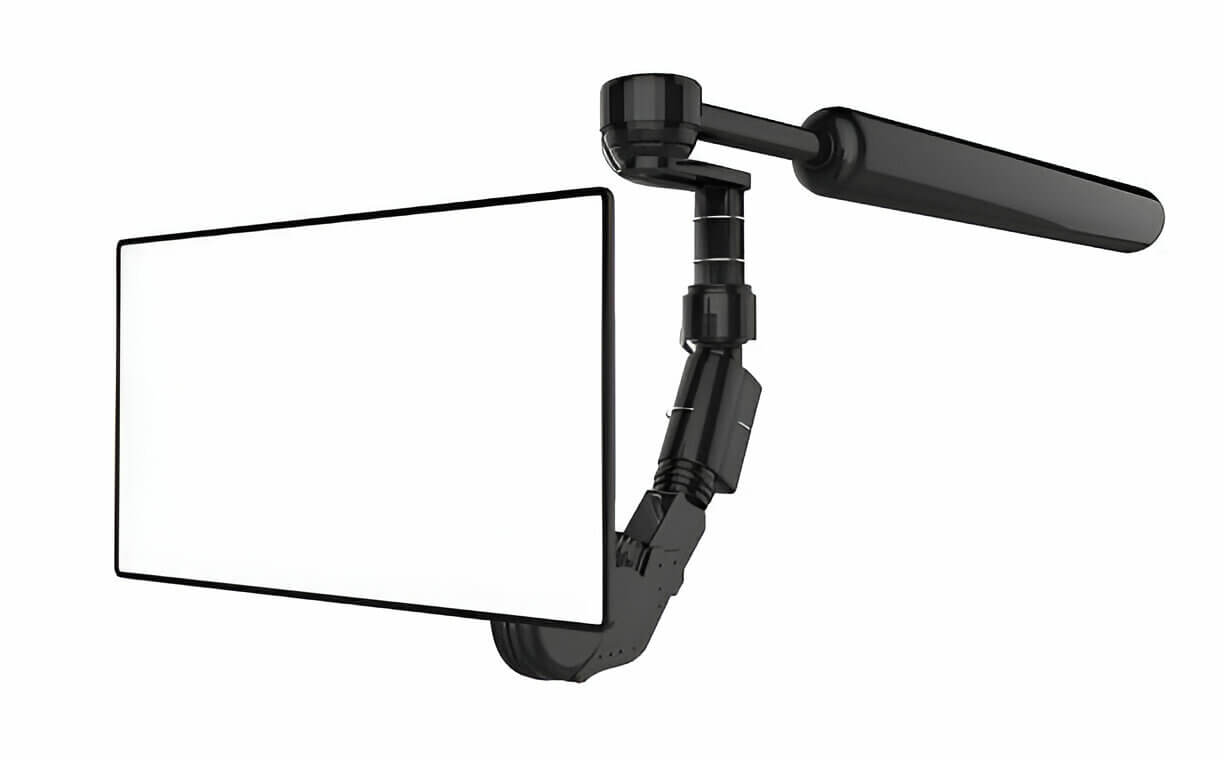Selecting the right monitor arm is essential for enhancing your viewing experience and overall productivity. With numerous options available, it’s important to consider various factors to find the best fit for your needs. This guide will walk you through the key aspects to consider when choosing a monitor arm for your setup.

What is a Monitor Arm?
A monitor arm is an adjustable device that attaches to your desk, wall, or ceiling, allowing you to position your monitor at an optimal height and angle. This flexibility helps reduce strain on your eyes, neck, and back, contributing to a more ergonomic workspace.
Why Do You Need a Monitor Arm?
Ergonomic Benefits
Using a monitor arm helps you find the most comfortable and ergonomic working posture by adjusting the screen to eye level. This reduces strain on your upper body and back, preventing discomfort from prolonged screen time.
Increased Productivity
A well-positioned monitor can increase your productivity by creating a more comfortable viewing experience. Dual and multi-monitor arms allow you to manage multiple screens efficiently, enhancing your ability to multitask.
Space Optimization
Monitor arms free up valuable desk space by lifting the monitor off the desk surface. This declutters your workspace, making it easier to organize and use your desk for other tasks.
Factors to Consider When Choosing a Monitor Arm
Monitor Size and Weight Compatibility
Ensure the monitor arm you choose can support the size and weight of your monitor. Check the manufacturer’s specifications for weight limits and screen size compatibility. Gas spring monitor mounts are particularly useful for heavier monitors as they provide additional support.
VESA Compatibility
Verify that your monitor is VESA compatible. VESA (Video Electronics Standards Association) standards specify the hole patterns on the back of monitors for mounting purposes. Ensure the monitor arm matches your monitor’s VESA pattern for secure attachment.
Desk Thickness and Material
Consider the thickness and material of your desk. Clamp mounts require a specific range of desk thickness to secure properly. If your desk is too thick or too thin, you may need to opt for a different mounting style, such as a grommet mount.
Adjustability Features
Look for monitor arms with adjustable height, tilt, swivel, and rotation features. These allow you to position your monitor at the ideal viewing angle and distance, reducing strain and enhancing comfort. Decide if you need a simple arm for basic adjustments or one with more flexibility for frequent changes in position.
Space and Desk Layout
Evaluate your desk layout and available space. Ensure the monitor arm can fit comfortably within your workspace without causing obstructions. Consider whether you need a single or dual monitor arm based on your setup.
Cable Management
Choose a monitor arm with built-in cable management features to keep your workspace tidy. These features help organize and conceal cables, reducing visual clutter and making your desk look cleaner.
Budget Considerations
Monitor arms come in a range of prices, depending on features and quality. Determine your budget and look for a monitor arm that offers a balance between cost and functionality. Higher-priced models often provide better stability and more adjustment options.
Types of Monitor Arms
Single Monitor Arms
Ideal for users with one monitor, single monitor arms offer basic height and angle adjustments. They are suitable for most desk setups and provide significant ergonomic benefits.
Dual and Multi-Monitor Arms
For users with multiple monitors, dual or multi-monitor arms are essential. These arms allow you to position multiple screens side by side or stacked vertically, enhancing your ability to multitask and manage multiple displays efficiently.
Gas Spring Monitor Arms
Gas spring monitor arms provide smooth and easy adjustments, making them ideal for heavier monitors. The gas spring mechanism allows for precise positioning and stability, ensuring your monitor stays in place.
Conclusion
Choosing the right monitor arm involves considering various factors, including monitor size and weight, VESA compatibility, desk characteristics, adjustability features, and budget. By understanding your needs and evaluating these aspects, you can select a monitor arm that enhances your workspace’s ergonomics and productivity. With the right monitor arm, you can create a more comfortable, organized, and efficient working environment.




